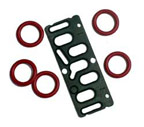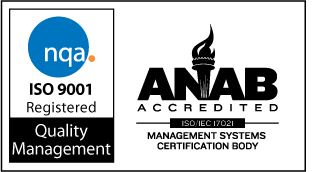
|
7108
S. Alton Way, Unit I |
(303) 758-2728
Home > Viton > Chemical Resistance
Viton™ Chemical Resistance

The range of chemicals which Viton is resistant against is one of the broadest of all the elastomers.
General Chemical Resistance:
Viton is resistant to oils, aqueous media and most other fluids. The range of chemicals to which Viton is resistant is so broad that it is by far easier to just list the few chemicals in which Viton will be will be chemically attacked or swollen.
In general, low molecular weight ketones and esters will swell a vulcanizate of Viton. In fact, ketones such as methyl ethyl ketones are used as solvents for uncured Viton. Esters such as ethyl acetate are also used as solvents for Viton (uncured). The more polar a material the more likely it will swell Viton. Much work is being done in the area of solubility parameters to characterize the swelling behavior of various fluids by comparison of dispersion, hydrogen bonding and dipole parameters to the corresponding parameters of the elastomer.
Amines affect Viton differently from the ketones and esters. Generally, amines will react with the polymer backbone and result in embrittlement of the vulcanizate. The elongation will drop off significantly and hardness will increase. Amines are just one kind of base. In general, strong bases such as sodium hydroxide at relatively high concentrations will degrade Viton. In summary, a basic understanding of chemistry is helpful in judging an elastomer's resistance to swelling or degradation.
Broad Chemical Compatibility
Because Viton FKM Fluorocarbon is compatible with a very wide range of chemicals, fuels and solvents, it can reduce costs through extended service life and reduce unscheduled downtime for seals and components. Broad compatibility also increases product versatility to extend applications.
Compounding:
A typical recipe for Viton will contain, besides the polymer, curatives (diamines, polyols, or peroxides), metal oxides (calcium oxide, magnesium oxide in combination with calcium hydroxide, oxides of lead), reinforcing fillers (carbon blacks, diatomaceous earth, and other mineral fillers) and processing aids as necessary. The use of these different compounding materials in formulating compounds based on Viton can have a significant effect on the performance of the vulcanizate in service.
The volume of elastomer in the compound, much more than the degree of crosslinking, can have a marked effect on volume swell after fluid immersion.
In general, the oxides of lead, and in particular litharge, are used when resistance to aqueous media is of primary importance. Peroxide-cured compounds of Viton FKM fluorocarbon are usually more resistant to aqueous media than compounds cured with either diamines or polyols. Bear in mind that a standard formulation of Viton, such as one using a polyol, magnesium oxide/calcium hydroxide cure system, still has excellent resistance to most fluids.
Next: Viton Permeation Resistance To Reduce Emissions
* Photograph © Can Stock Photo Inc. | tomas1111
We are located in the Denver Technological
Center in a suburb of Denver, Colorado
©1997-2017, Problem Solving Products, Inc.
Website Map | Privacy Statement
| Terms of Use



